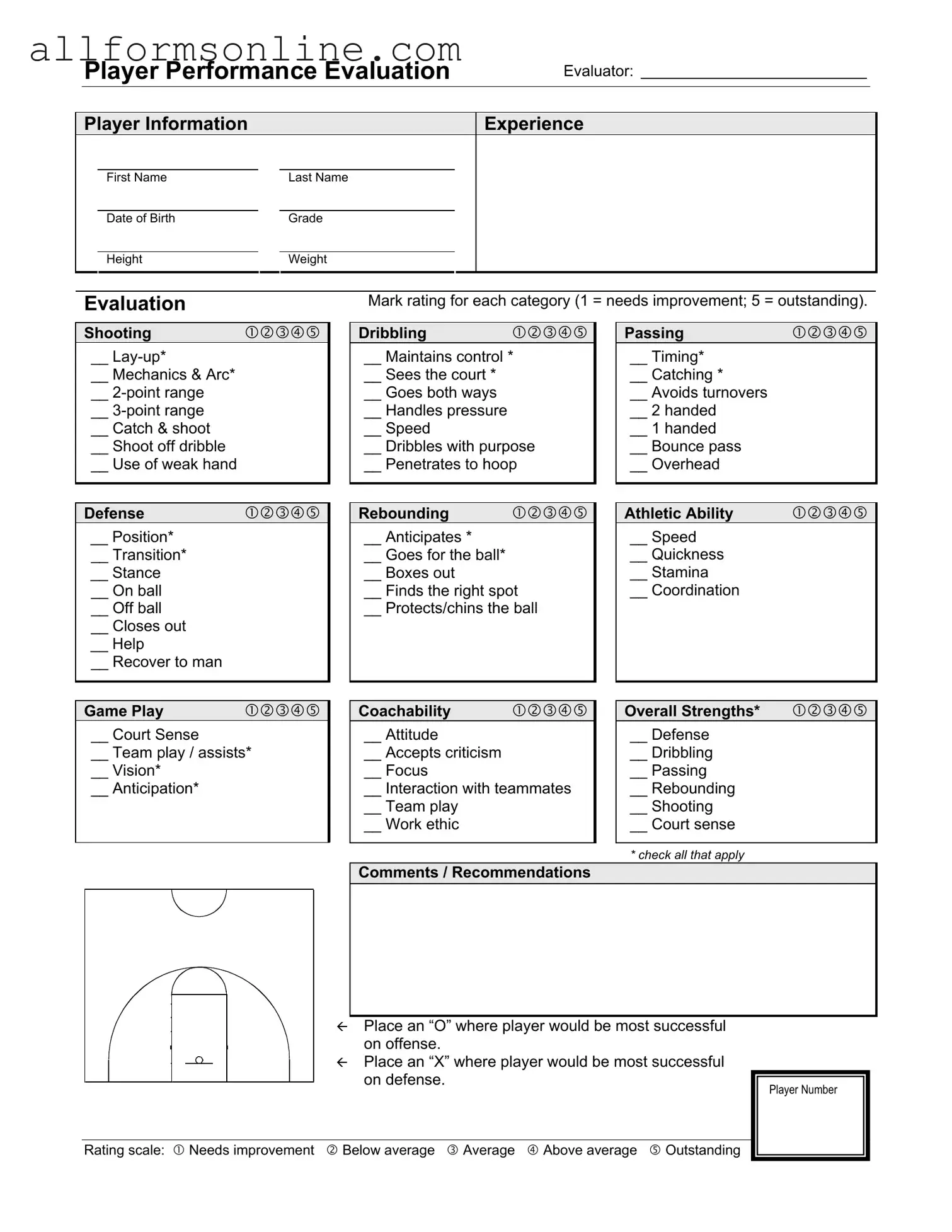What is the purpose of the Basketball Evaluation form?
The Basketball Evaluation form is designed to assess a player's skills and performance in various areas of the game. Coaches and evaluators use it to provide a structured overview of a player's strengths and areas for improvement. This feedback helps players understand their current abilities and what they can work on to enhance their performance on the court.
Who should complete the Basketball Evaluation form?
The form should be completed by coaches, trainers, or evaluators who have observed the player during practices or games. It is essential that the evaluator has a good understanding of basketball fundamentals to provide accurate assessments.
What categories are included in the evaluation?
The evaluation covers several key categories: Shooting, Defense, Dribbling, Rebounding, Passing, Athletic Ability, Game Play, and Coachability. Each category includes specific skills that the evaluator rates on a scale from 1 to 5, allowing for a comprehensive overview of the player's abilities.
How is the rating scale structured?
The rating scale ranges from 1 to 5. A score of 1 indicates that the player needs improvement, while a score of 5 signifies outstanding performance. This scale allows evaluators to give nuanced feedback, helping players identify where they excel and where they may need additional practice.
What should I do with the comments and recommendations section?
The comments and recommendations section is a valuable space for the evaluator to provide personalized feedback. Here, they can elaborate on the player's performance, suggest areas for improvement, and highlight specific skills that stand out. This qualitative feedback can be just as important as the numerical ratings.
How can the evaluation help a player improve?
The evaluation provides clear insights into a player's strengths and weaknesses. By understanding where they excel and where they need work, players can focus their training efforts more effectively. Additionally, constructive criticism from the evaluator can motivate players to adopt a growth mindset and strive for improvement.
What does the “O” and “X” notation signify?
The “O” notation indicates where the player would be most successful on offense, while the “X” notation shows where they would be most effective on defense. This visual guide helps players and coaches quickly identify the player's optimal positions and roles during games.
Is the Basketball Evaluation form suitable for all age groups?
Yes, the Basketball Evaluation form can be adapted for players of all ages and skill levels. While younger players may focus more on basic skills, advanced players can benefit from a more detailed analysis of their game. Coaches can tailor the evaluation to suit the specific needs of their team and players.
